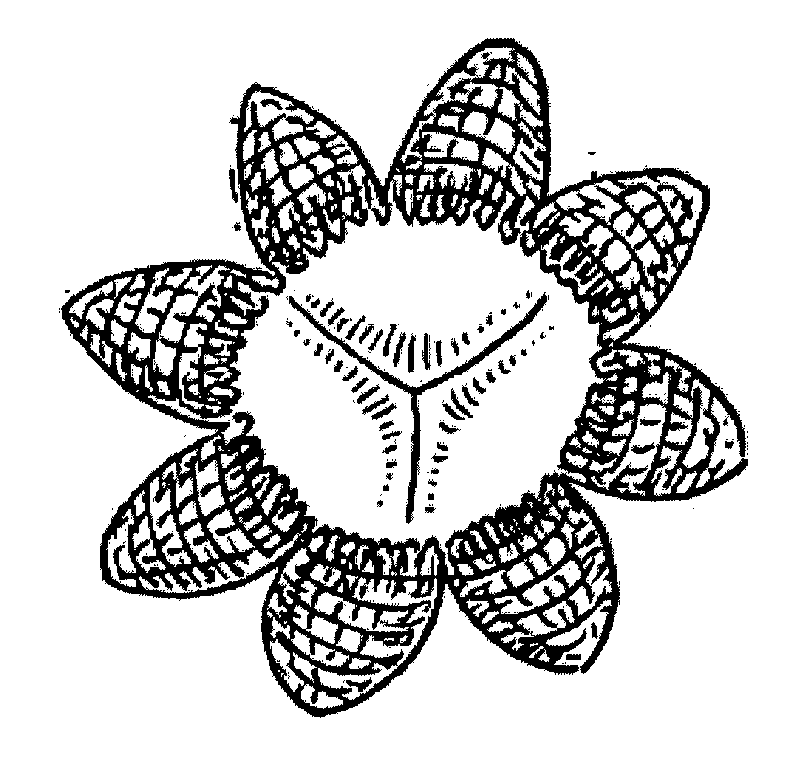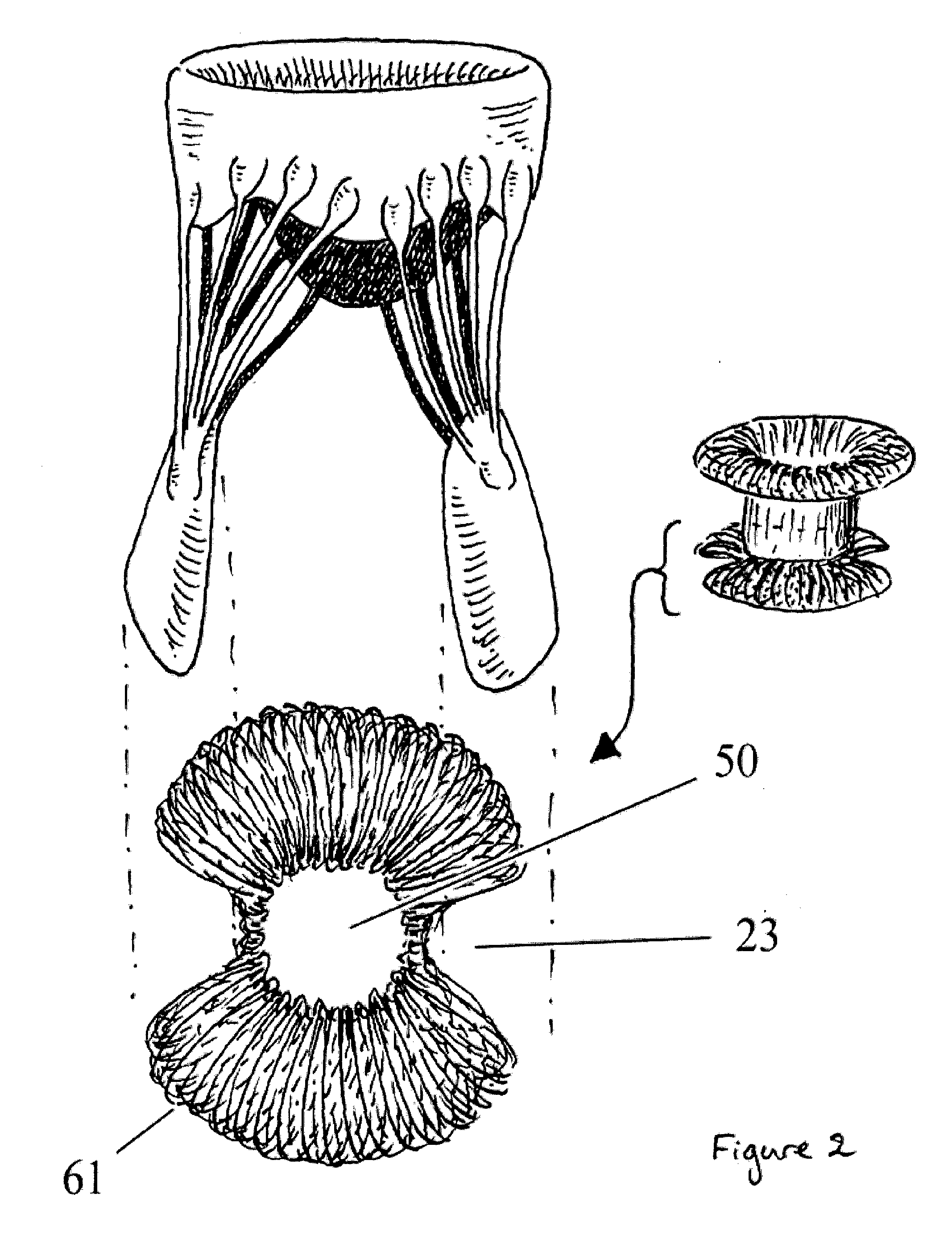Disk-Based Valve Apparatus and Method for the Treatment of Valve Dysfunction
a valve apparatus and valve technology, applied in the field of valve implantation, can solve the problems of inability to achieve the effect of distal anchoring of the device, limited information on the efficacy of the procedure, and inability to achieve the effect of distal anchoring, facilitating the centering and stability of the valve apparatus,
- Summary
- Abstract
- Description
- Claims
- Application Information
AI Technical Summary
Benefits of technology
Problems solved by technology
Method used
Image
Examples
second embodiment
[0108]In a further second embodiment, which is similar to the embodiment described above, the valve apparatus 10 comprises a single distal anchoring disk 61. When the insertion of the apparatus 10 is completed within the patient's dysfunctional valve, a distal disk 61 is released. At this point, the distal disk 61 is partially deformed and the valve-component housing 50 is positioned at the level of the dysfunctional valve plane. Then, the proximal segment of the apparatus 10 is fully released to complete the positioning of the valve apparatus 10.
[0109]In a further third embodiment, which is based on the further second embodiment, the valve apparatus 10 comprises a single distal anchoring disk 61 and a smaller and shorter proximal disk 62. When the insertion of the valve apparatus 10 is completed within the patient's dysfunctional valve, the distal disk 61 is released. At this point, the distal disk 61 is partially deformed and the valve-component housing 50 is positioned at the lev...
fourth embodiment
[0110]In a further fourth embodiment, as shown in FIG. 6, a valve apparatus 10 comprises a plurality of independent units, which may be hollowed, a valve component 30 generally located in the central portion 50 and at least two separate anchoring systems 20 or disks 60. When the insertion of the valve apparatus 10 is completed, the distal disks 61 are released. Even if not required, each distal disk 61 may comprise one or more additional anchoring structures allowing the sub-valvular to be anchored and positioned in regards to the distal disk 61. Upon deformation of the distal disk 61, the apparatus 10 is pulled back into the plane of the dysfunctional valve in order to position the valve component 30 located in the valve-component housing 50. The valve apparatus 10 is positioned into an expandable structure, such as a balloon. The expandable structure may be deployed following initial positioning of the valve apparatus 10. Once positioned, a second disk 62 is released in order to s...
fifth embodiment
[0111]In a further fifth embodiment, as shown in FIG. 7, a valve apparatus 10 comprises a plurality of wires 63 distributed in a way to form one or more disks 60, either distal 61 or proximal 62, and a valve component 30 generally located in the central portion 50. Each wire 63 may comprise an anchoring mechanism such as a hook or needle. When the insertion of the valve apparatus 10 is completed, the distal disk 61 is released. Upon deformation of the distal disk 61, the apparatus 10 is pulled back into the plane of the dysfunctional valve in order to position the valve component 30 located in the valve-component housing 50. Once positioned, a second disk 62 is released in order to secure the entire apparatus 10 in place. The configuration of this embodiment may be changed or adapted according to the route of insertion, such as anterograde versus retrograde or percutaneous versus trans-apical versus trans-atrial.
PUM
 Login to View More
Login to View More Abstract
Description
Claims
Application Information
 Login to View More
Login to View More - R&D
- Intellectual Property
- Life Sciences
- Materials
- Tech Scout
- Unparalleled Data Quality
- Higher Quality Content
- 60% Fewer Hallucinations
Browse by: Latest US Patents, China's latest patents, Technical Efficacy Thesaurus, Application Domain, Technology Topic, Popular Technical Reports.
© 2025 PatSnap. All rights reserved.Legal|Privacy policy|Modern Slavery Act Transparency Statement|Sitemap|About US| Contact US: help@patsnap.com



